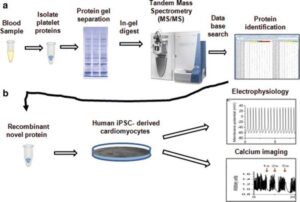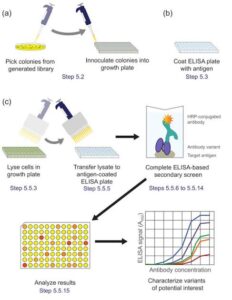Back to: MICROBIOLOGY 400 LEVEL
Welcome to class!
Hello there, superstar! It’s great to have you in class again. You’ve been doing so well, and I’m proud of the way you’re staying committed to your learning. Today’s topic is an important one in the world of industrial microbiology—Primary and Secondary Screening. These processes help us identify microorganisms that can be useful in industries like medicine, agriculture, and food production. Let’s make it clear and relatable together.
Primary And Secondary Screening
Screening is like looking for treasure—but instead of digging in sand, scientists are searching through soil, water, plants, or even decaying food to find microorganisms that have special abilities. These abilities could be producing antibiotics, breaking down waste, making alcohol, or helping plants grow better.

Screening helps scientists pick the best microbes for industrial use. And it is done in two main stages: primary and secondary.
Primary Screening
This is the first step in identifying useful microorganisms. The goal here is to detect whether a microorganism has the potential to produce something useful.
It is usually a simple, quick, and low-cost method. Scientists collect samples from natural habitats like soil or water, then grow the microbes on nutrient-rich media in the lab. They observe the colonies for signs of special activities.
Some common things they look for:
Antibiotic production: A microbe that clears a zone around itself by killing nearby bacteria.
Enzyme activity: A microbe that breaks down starch on an agar plate (observed by adding iodine and looking for clear zones).
Acid production: Detected using pH indicators that change colour.
This stage helps narrow down which microbes are worth investigating further.
Secondary Screening
Once a promising microbe is identified in primary screening, secondary screening takes it a step further. This stage involves more detailed testing to find out exactly how useful the microbe is, how much product it makes, and how stable or efficient it is.
For example:
Measuring the amount of antibiotic produced.
Testing if the product is safe and stable.
Analysing the chemical structure of the compound produced.
Studying how environmental factors affect the microbe’s performance.
This step is crucial for industries because it helps them decide whether it’s worth investing in the large-scale production of that microbe.

Imagine you’re selecting the best palm wine for a festival. You first taste a few samples (primary screening) to find which ones are sweet and well-fermented. Then you test your favourite further (secondary screening)—how strong is it, how long can it last, and how does it taste the next day? That’s exactly what scientists do with microbes.
Also, in a Nigerian lab, soil samples from farmlands in Kaduna might be screened to find bacteria that can kill crop pests or help beans grow faster.
Summary
- Screening is the process of identifying useful microorganisms from natural sources.
- Primary screening is the first stage, where microbes are tested for general activity like antibiotic or enzyme production.
- Secondary screening is more detailed and measures the efficiency, quantity, and stability of the product.
- These steps help scientists select microbes for industrial applications like medicine, agriculture, and food processing.
- Screening saves time and resources by focusing only on the most promising microbes.
Evaluation
- What is the purpose of primary screening in microbiology?
- How is secondary screening different from primary screening?
- Give one example each of what scientists look for in primary and secondary screening.
Every concept you understand takes you closer to becoming a solution-provider in science and industry. You’re growing stronger with every lesson. Keep shining, keep learning, and let’s continue this exciting journey with Afrilearn. See you in the next class!
